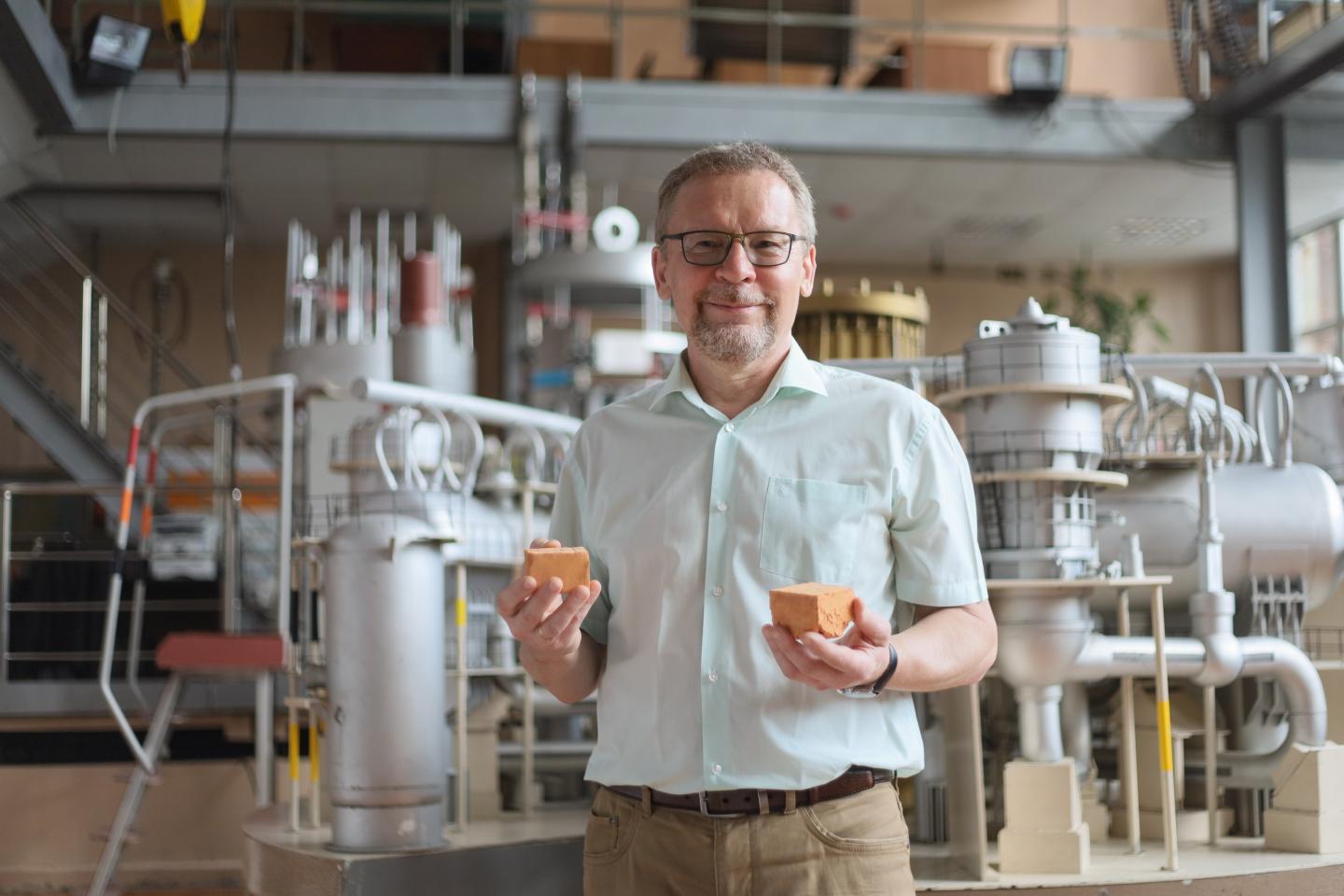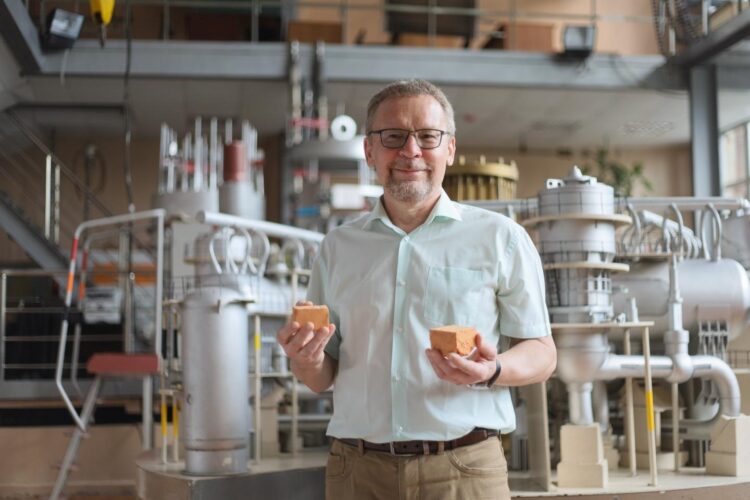Bricks made of new materials are cheaper and more environmentally friendly than analogues made of lead and other materials

Credit: UrFU / Anastasia Farafontova
Scientists at the Ural Federal University (UrFU, Russia) have created clay bricks that are able to attenuate ionizing radiation to a level that is safe for the human body. To the composition of bricks scientists add waste from the industry, which protects against radiation. The article describing the technology was published in the journal Applied Radiation and Isotopes.
“Bricks are a relatively cheap and convenient material with which we can quickly erect protective rooms, structures, walls around objects with radiation,” says scientific head of the project, associate professor of the Department of Nuclear Power Plants and Renewable Energy Sources at UrFU Oleg Tashlykov. “The bricks are alloyed with heavy metals – wastes from the metallurgical enterprises. These substances have pronounced radiation-protective properties. Thus, we solve two problems at once. First, by adding crushed absorbers of ionizing radiation to the matrix, in this case from clay, we obtain building materials with the desired protective properties. Secondly, in this way we find a way to utilize industrial waste.”
The ultimate goal of scientists is to develop a wide range of materials based not only on clay, but also cement mortars or concrete, artificial polymers with different chemical composition and concentration of absorbing substances. In other words, with specified protective properties that meet specific conditions (isotopic composition of radioactive contamination, types of radiation, etc.) at nuclear power plants, in radioactive waste storage facilities, as well as in medical institutions where diagnostics and treatment are carried out using X-ray equipment and irradiating devices.
“Tungsten is widely known to be the most reliable protection against gamma or X-ray radiation, but it is very expensive,” says research coauthor, research engineer of the Department of Nuclear Power Plants and Renewable Energy Sources at UrFU Karem Makhmud. “Lead is cheaper but toxic. And, besides, it is plastic and in an upright position can slide under its own weight, forming holes in the radiation protection system and reducing its stability. Our materials are optimal in terms of radiation protection efficiency and ease of manufacture, strength, durability, cost. The latter factor is important, since today the contribution of biological protection to the cost of nuclear power facilities reaches 20-30%.”
Scientists use high-precision computational codes to create bricks. Also they use for their experimental research the reactor plant of the Institute of Reactor Materials of the State Corporation “Rosatom” (Russia), as well as the production technologies of the Sealing Materials Plant (Russia). The products of joint activities are of great interest to domestic and foreign enterprises of the nuclear industry. There are plans to further study the mechanical and radiation-protective parameters of various natural substances, including those common in the partner countries of Rosatom (Turkey, Egypt, Bangladesh), where nuclear power plants are being built with the participation of Russian specialists.
###
Media Contact
Anna Marinovich
[email protected]
Original Source
http://urfu.
Related Journal Article
http://dx.





